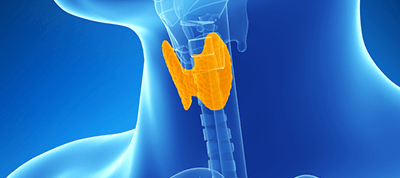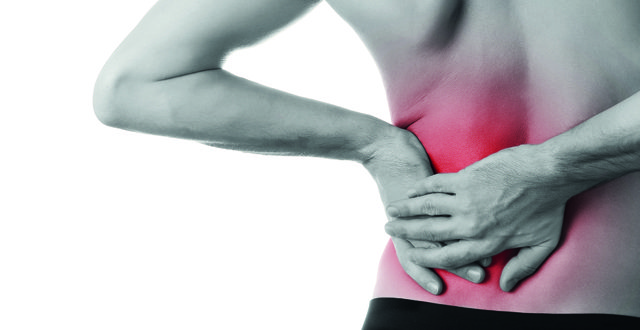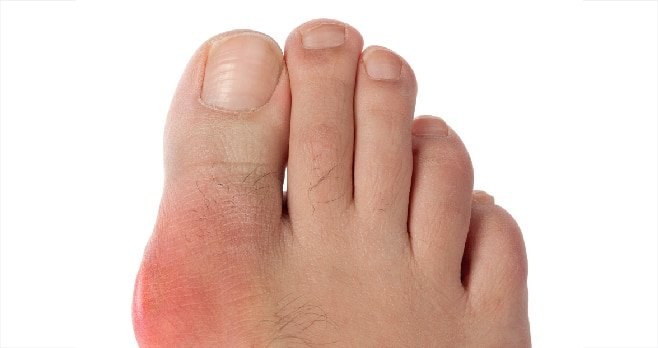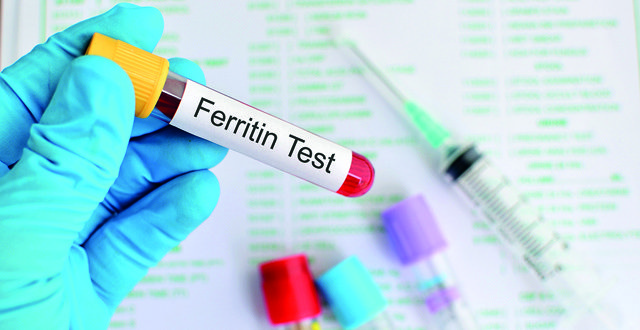Facial pain remains a clinically challenging diagnosis with significant therapeutic difficulties. While some causes are fairly straightforward to treat, such as sinusitis, dental abscess or post-traumatic pain, other causes, such as trigeminal or post-herpetic neuralgia (PHN), may be very difficult to treat. There is always the concern that facial pain may be the harbinger of a potentially life-altering diagnosis, such as multiple sclerosis or a brain tumour.
<h3><strong>Post-herpetic neuralgia</strong></h3>
PHN is the most common facial neuralgia. It is caused by acute herpes zoster, commonly known as shingles. This occurs when the dormant varicella zoster virus in the dorsal root ganglion is reactivated, often during a time of immunosuppression or stress. This is the same virus that causes childhood chickenpox. The acute period of herpes zoster often involves a prodrome of pain in a single dermatome distribution, followed by a painful vesicular rash. The rash typically resolves in two-to-four weeks. The incidence of herpes zoster sharply increases with advancing age, occurring in 12 per 1,000 per year for those in their 80s. Herpes zoster can occur in any dermatome. PHN is the most common complication of herpes zoster, occurring in up to 20 per cent of patients. It is defined as pain persisting in the affected dermatome 90 days after the appearance of the rash. While the majority of patients will experience an improvement in pain over the following six months, some will have persistent debilitating pain. The risk factors for developing PHN after herpes zoster are a painful prodromal prior to the appearance of the rash, greater severity of both the rash and associated pain during the acute phase and older age.
Notably, only 2 per cent of patients younger than 60 years old with herpes zoster will develop PHN, while 70 per cent of those aged over 70 years will develop the complication.
Clinically, the patient will present with a characteristic history and so no further investigations are required, unless an alternative diagnosis is suspected.
The pain features presenting can be grouped into three categories. These are ongoing spontaneous pain, often described as ‘burning’; paroxysmal shooting pain; and evoked pains. The evoked pain can be in response to normally non-painful stimuli or allodynia, or an exaggerated pain response to normally painful stimuli or hyperalgesia. There will also often be a degree of sensory loss in the affected dermatome.
PHN causes considerable suffering in affected individuals. The use of a live varicella zoster virus vaccine has been shown to dramatically reduce the incidence of herpes zoster and therefore, PHN in patients over 60 years of age. This is available in Ireland, but is not currently on the routine vaccination schedule.
Regarding the acute management of herpes zoster, the use of antivirals within 72 hours of the appearance of the rash has been shown to accelerate the healing of the rash, but its effect on reducing the incidence of PHN is at best slight. Famciclovir is generally well tolerated, even in the elderly, and is now the most commonly-used antiviral drug. The use of corticosteroids was also evaluated but a Cochrane Review determined there was inadequate evidence to support regular use.
Once established, the treatment of PHN is similar to the treatment of other painful neuropathic conditions. Guidelines from the European Federation of Neurological Societies for the treatment of neuropathic pain recommend using a tricyclic antidepressant (TCA), gabapentin or pregabalin, as first-line management.
The most frequently-used and evaluated TCA is amitriptyline, with an NNT of 2.6. The starting dose of 10mg can be carefully titrated to effect, with a maximum daily dose of 150mg. TCAs should be avoided in patients with cardiac arrhythmias and used cautiously in the elderly patient, as confusion, postural hypotension and blurred vision can occur.
Gabapentin and pregabalin are alternatives to TCAs. Again, a low dose should be started and titrated to either effect or side-effects. The most common side-effects with these agents include sedation, dizziness and fluid retention.
The topical lidocaine plaster can also be considered first-line in elderly patients due to its excellent tolerability; however, with facial PHN, especially in the ophthalmic distribution, it can be practically difficult to apply the plaster to the affected area.
Opioids are second-line agents, with oxycodone having an NNT of 2.8 and tramadol an NNT of 3.9. However, their side-effect profile excludes long-term use.
Capsaicin cream can also be considered, but is not suitable for application close to the eye.
In cases refractory to optimal medications, referral to a pain specialist is appropriate. If the levels of distress are very high or the pain extremely severe, it may be required to admit the patient and titrate analgesia. This can be done by using IV patient-controlled analgesia, usually with oxycodone. This can be used as a bridge while a transdermal fentanyl patch is titrated.
Other options for use in these particularly difficult cases include EMLA application or IV infusions of lidocaine, ketamine or a combination of both.
<h3><strong>Trigeminal neuralgia</strong></h3>
Trigeminal neuralgia has an incidence of 3.5/100,0000 and is uncommon before 35 years of age, being found more commonly in females. Patients give a history of unilateral severe paroxysms of pain lasting from a few seconds to several minutes. There is no pain between attacks. Precipitants are common, such as a cold wind on the face, dental brushing or even eating. In 95 per cent of cases, no cause is found; however, it is important to be aware that there is a significant differential diagnosis, including multiple sclerosis, aneurysm or vascular anomaly, brain tumour, cerebral abscess and viral infections, such as herpetic infection or HIV.
Physical examination is often normal between attacks. As in all neuralgic pain, periods of frequent attacks can cease without explanation.
The trigeminal nerve has three divisions: V1 ophthalmic; V2 maxillary; and V3 mandibular. The division involved are: V2 and 3 — 42 per cent; V2 — 17 per cent; V3 — 15 per cent; and V1 in 1 per cent of cases.
Traditionally, carbamazepine therapy was initiated as first-line treatment and with an NNT of 1.7, remains the best antineuropathic agent for this condition. However, blood monitoring was required to identify thrombocytopaenia and thus, carbamazepine has been usurped by oxcarbazepine that does not require blood monitoring.
Lioresal is a useful adjuvant therapy because of muscle spasm associated with the severe paroxysms.
Second-line therapy includes clonazepam, phenytoin, gabapentin, lamotrigine and topiramate.
In very severe cases, it is reasonable to start oxynorm therapy as well and arrange an urgent specialist appointment.
Indications for specialist referral include failure of first-line therapy and very severe pain.
Magnetic resonance angiography (MRA) is the standard investigation, which will identify the presence of other potential aetiologies, except herpetic infection and HIV. If another diagnosis is made by MRA, then appropriate specialist referral is made. If the MRA is unhelpful, then trigeminal nerve block is used to confirm diagnosis and provide analgesia. Increasingly today, a pulsed radiofrequency (PRF) technique is used, which allows diagnosis, application of local anaesthetic, and a PRF lesion at the same visit to theatre. This may be carried out in a day care setting. The patient should experience an adequate response. If this is not the case, then the option of rhizotomy or neurosurgical referral is discussed with the patient.
Neurosurgical treatment is indicated in the presence of a vascular aetiology, abscess, tumour or poor response to pain specialist intervention. Neurosurgical microsurgical decompression has been largely replaced by cyberknife today for persistent trigeminal neuralgia.
Rhizotomy has a 2-to-4 per cent risk of corneal damage, masseter damage, anaesthesia dolorosa and facial numbness. Cyberknife treatment can take three months for a benefit to be accrued and is also associated with significant potential complications, including paraesthesia/dysaesthesia, corneal dysfunction, diplopia, trismus and masseter dysfunction. Duration of analgesic response with rhizotomy and/or cyberknife is usually in the order of two-to-three years.
Because of the significant risks associated with these treatments, some patients prefer to have the PRF treatment (which has a very low risk profile) repeated more frequently.
After medical or interventional treatment, recurrence of trigeminal neuralgia can occur without any apparent precipitating cause.
<h3><strong>Trigeminal neuropathy</strong></h3>
Trigeminal neuropathy is caused by facial trauma, or no cause is identified. It is an extremely debilitating condition. The patient describes that their whole face is ‘burning’ and the pain is constant. Response to analgesic medication is unpredictable.
<h3><strong>Mid-facial segment pain</strong></h3>
This is a facial neuralgia with similar characteristics of tension-type headache, except that it affects the mid-face. It is often described as a pressure pain and is usually symmetric. It involves the nasion, bridge of the nose, either side of the nose, the periorbital region, or across the cheeks. The only positive finding on examination may be local hyperaesthesia. Nasal endoscopy and radiology is normal. The most effective treatment is low-dose amitriptyline.
<h3><strong>SUNCT and SUNA</strong></h3>
Short-lasting unilateral neuralgiform headache with conjunctival tearing (SUNCT) is a rare form of headache associated with facial pain. It is associated with up to 200 attacks per day that last seconds. It is best treated with lamotrigine.
Short-lasting unilateral neuralgiform headache with autonomic symptoms (SUNA) is another trigeminal autonomic cephalgia, although conjunctival tearing is not usually seen.
SUNCT is more common than SUNA. Pain attacks last for up to 10 minutes and there is associated eyelid oedema and rhinorrhoea.
It is best treated with gabapentin.
<h3><strong>Glossopharyngeal neuralgia</strong></h3>
Glossopharyngeal neuralgia is uncommon, 0.5/100,000, and is found in older people and is rarely benign. The pain is sharp and repetitive, starting in the throat and tongue, radiating to the face and ears. MRI imaging is essential.









Leave a Reply
You must be logged in to post a comment.